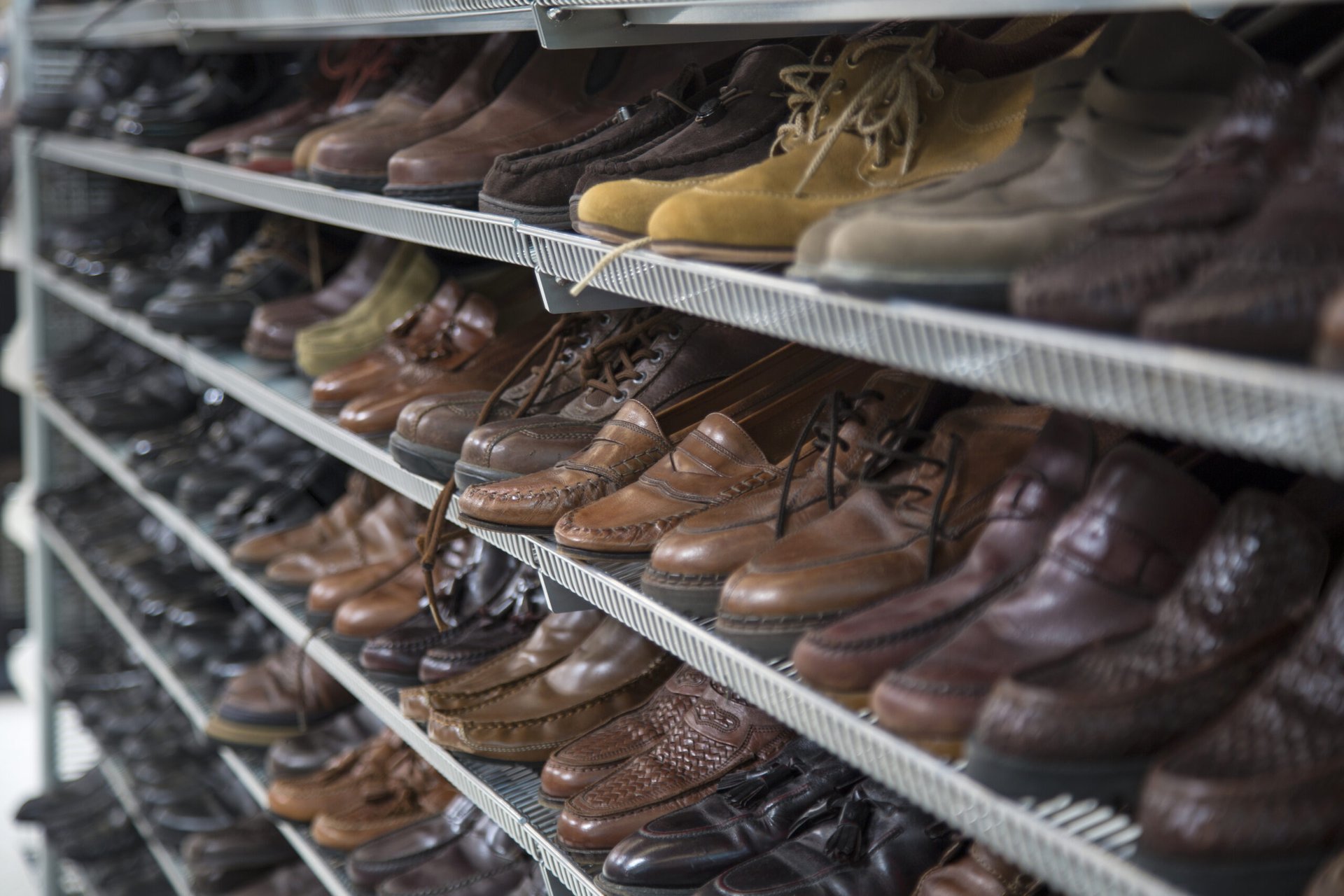
Shopping thrift stores, flea markets and estate sales can be overwhelming. With the sheer volume of stuff, how do you know where to start? How do you spot gems amid all the … well, junk?
As a professional reseller who has been combing through thrift stores for the better part of 30 years, I can help. If you’re ready to cut your shopping time in half, score bigger bargains or walk away with brag-worthy finds you can flip for cash, read on.
From hard-to-find household items to resale money-makers, everything featured in my “Thrift Shop Like a Pro” series qualifies as a BOLO (Be On the Look-Out for) item. When you find it, buy it!
Featured find: Vintage Florsheim Imperial shoes
Do you avoid the shoe section at thrift shops? You’re not alone. For many, the “ick” factor of buying used footwear isn’t worth the savings or potential profit. And while the aversion makes perfect sense — people are weird about feet anyway, right? — vintage Florsheim Imperial shoes might change your mind.
They are one of the hottest items in resale clothing right now — and thankfully, one of the easiest to find in the wild. But one big caveat before we continue: The Imperial line was designed for men. Sadly, there’s no equivalent Florsheim hot-seller for women.
Founded by Milton Florsheim in 1892, Florsheim shoes started in a small factory in Chicago. The company blended quality craftsmanship and style with what was an afterthought at the time — personal comfort.
By 1920, the company had a yearly revenue of $10 million and operated 48 retail stores across the nation.
In the 1950s, the family-owned operation was sold to the International Shoe Co., and by the 1980s, Florsheim’s legendary quality began to slip as manufacturing moved overseas.
In 2002, the Florsheim Shoe Co. was reclaimed by the descendants of its founder. Milton’s great-grandsons purchased the brand and have updated its offerings with new materials and a renewed commitment to comfort and style.
Why buy it?
Vintage Florsheim Imperials are nicknamed “gunboats.” The term refers to the naval ships of World War II — large, overbuilt and nearly impossible to destroy.
If you’ve ever owned a pair, you know the moniker fits perfectly. This premier line of Florsheim shoes featured leather uppers, multi-layer leather soles, and heels manufactured by Goodyear.
Going “toe-to-toe” with that level of quality today would take hundreds of dollars (and the help of a skilled cobbler). When you find a pair of Imperials that fit, buy ’em. They will probably outlast all other footwear you own.
But if wearing used shoes just isn’t your thing, Florsheim Imperials are highly “flip-able” in the resale market. Most thrift shops price shoes between $7 and $10, but dapper dressers will happily pay more than $100 per pair online.
This size 11 C pair in brown leather sold for $199.99 on eBay and this size 10 pair sold for $135. On Etsy, this pair of size 11 B Imperials in black is listed for $303.60.
What to look for
Florsheim marked their shoes well. The logo, usually printed in gold, can be found on the insole of each shoe. It reads “THE FLORSHEIM SHOE” and is followed by an image of a crown and the words “Imperial Quality” in highly flourished script.
Some Imperials also have a green label sewn on the inside lining. Look for a small oval label that reads “FLORSHEIM IMPERIAL.”
If you plan to resell Imperials for a profit, pay attention to the following details to get the most bang for your buck:
- Construction method: Some early Florsheim Imperials feature a V cleat, a small triangular piece of metal on the heel bottom that’s designed to slow wear. Shoes with V cleats typically have another desirable feature: five-nail construction. Where the ball of the foot hits on the sole, look for five small nails — three on one side and two on the other. This construction method secures the multiple layers of leather together.
- Style: Wingtips, also called “brogues,” tend to sell for higher values than plain-toe styles. And longwings — shoes with wingtip detail that extends to the back of the shoe — sell for a premium.
- Style number: Though all vintage wingtips have value, style numbers 93602, 93604 and 93605 are in high demand. Find the style number below the size marking on the lining of the shoe.
- Color and texture: In my experience, brown Florsheims sell better than blacks and burgundies. Buyers also prefer pebble-grain leather over smooth.
- Condition: Condition is king. Avoid shoes with excessive wear to the back of the heels or thinning leather on the soles.
Pro-tip: Employ the “bend test” before buying any pair of secondhand shoes. Turn each shoe over so that the sole is visible, then bend downward (heel towards the toe). This simple flex makes any split in the sole immediately visible.





Add a Comment
Our Policy: We welcome relevant and respectful comments in order to foster healthy and informative discussions. All other comments may be removed. Comments with links are automatically held for moderation.